Published in
www.hrw.org
Investigate, Punish Those Responsible for Any War Crimes
(Beirut) – International observers have discovered an execution site in west Mosul, Human Rights Watch said today. That report, combined with new statements about executions in and around Mosul’s Old City and persistent documentation about Iraqi forces extrajudicially killing men fleeing Mosul in the final phase of the battle against the Islamic State (also known as ISIS), are an urgent call to action by the Iraqi government.
Despite repeated promises to investigate wrongdoing by security forces, Prime Minister Haider al-Abadi has yet to demonstrate that Iraqi authorities have held a single soldier accountable for murdering, torturing, and abusing Iraqis in this conflict.
“As Prime Minister Abadi enjoys victory in Mosul, he is ignoring the flood of evidence of his soldiers committing vicious war crimes in the very city he’s promised to liberate,” said Sarah Leah Whitson, Middle East director at Human Rights Watch. “Abadi’s victory will collapse unless he takes concrete steps to end the grotesque abuses by his own security forces.”
International observers, whose evidence has proven reliable in the past, told Human Rights Watch that on July 17, 2017, at about 3:30 p.m., a shopkeeper in a neighborhood directly west of the Old City that was retaken in April from ISIS took them into an empty building and showed them a row of 17 male corpses, barefoot but in civilian dress, surrounded by pools of blood. They said many appeared to have been blindfolded and with their hands tied behind their back.
They said the shopkeeper told them that he had seen the Iraqi Security Forces’ 16th Division, identifiable by their badges and vehicles, in the neighborhood four nights earlier, and that night had heard multiple gunshots coming from the area of the empty building. The next morning, when armed forces had left the area, he told them, he went into the building and saw the bodies lying in positions that suggested they were shot there and had not been moved. He said he did not recognize any of those killed.
The international observers also saw soldiers from the elite Counter Terrorism Service (CTS) in the area. They contacted Human Rights Watch by phone from the site and later shared five photos they took of the bodies.
On July 17, another international observer told Human Rights Watch they spoke to a senior government official in Mosul who told them he was comfortable with the execution of suspected ISIS-affiliates “as long as there was no torture.” The observer said a commander showed their group a video taken a few days earlier of a group of CTS soldiers holding two detainees in the Old City. They said the commander told them that the forces had executed the men right after the video was taken.
Salah al-Imara, an Iraqi citizen who regularly publishes information regarding security and military activities in and around Mosul, published four videos allegedly filmed in west Mosul on Facebook on July 11 and 12. One video, posted on July 11, appears to show Iraqi soldiers beating a detainee, then throwing him off a cliff and shooting at him and at the body of another man already lying at the bottom of the cliff. Human Rights Watch had verified the location of the first video based on satellite imagery. Other videos showed Iraqi soldiers kicking and beating a bleeding man, federal police forces beating at least three men, and Iraqi soldiers kicking a man on the ground in their custody.
A third international observer told Human Rights Watch on July 18 that they witnessed CTS soldiers bring an ISIS suspect to their base in a neighborhood southwest of the Old City on July 11. The observer did not see what happened to the suspect next, but said that a soldier later showed them a video of himself and a group of other soldiers brutally beating the man, and a second video of the man dead, with a bullet to his head.
“Some Iraqi soldiers seem to have so little fear that they will face any consequence for murdering and torturing suspects in Mosul that they are freely sharing evidence of what look like very cruel exploits in videos and photographs,” Whitson said. “Excusing such celebratory revenge killings will haunt Iraq for generations to come.”
A fourth international observer told Human Rights Watch on July 11 that the day before they had witnessed a group of CTS soldiers push a man whose hands were tied behind his back into a destroyed shop near the main road in the west to the Old City. They said they heard several gunshots, went into the shop after the soldiers had left, and found the man’s body with several bullet holes in the back of his head. They shared the photo of the body.
On July 10, the same observer said they saw Iraqi Security Forces just outside the Old City holding about 12 men with their hands tied behind their backs. They said an officer told them that the military’s 9th Division had detained these men inside the Old City on suspicion of ISIS affiliation. They said they saw the soldiers lead the detained men just out of sight, then heard shots ring out from their direction. The observer was unable to verify what happened.
On July 7, two additional international observers told Human Rights Watch that on different occasions in late June, they witnessed soldiers bring at least five suspected ISIS affiliates out of the Old City to the west, strapped to the hoods of Humvees, when temperatures in the city often reached 48 degrees Celsius, or 118 degrees Fahrenheit.
The nongovernmental organization Mosul Eye has been documenting abuses by all sides in Mosul since 2014, and has posted numerous videos and witness statements about executions on its Twitter feed since July 14, with one reading: “Mass Executions ‘Speicher Style’ [a reference to an ISIS massacre in 2014] for the last survivors of the old city. ISF is killing and throwing bodies of everyone it finds to the river.”
As of July 10, the Iraqi military has prevented access to west Mosul for most journalists, limiting coverage of recent events inside the Old City. Iraqi forces should allow journalists access to west Mosul to report on the conflict and any alleged abuses, Human Rights Watch said.
Throughout the operation to retake Mosul, Human Rights Watch has documented Iraqi forces detaining and holding at least 1,200 men and boys in inhumane conditions without charge, and in some cases torturing and executing them, under the guise of screening them for ISIS-affiliation. In the final weeks of the Mosul operation, Human Rights Watch has reported on executions of suspected ISIS-affiliates in and around Mosul’s Old City.
An Iraqi Ministry of Foreign Affairs representative told Human Rights Watch on July 19 that he would request a government investigation into the allegations. Human Rights Watch has repeatedly raised concerns about allegations of ill-treatment, torture, and executions in meetings with Iraqi officials in Baghdad as well as with representatives from United States-led coalition member countries. Human Rights Watch does not know of a single transparent investigation into abuses by Iraqi armed forces, any instances of commanders being held accountable for abuse, or any victims of abuse receiving compensation.
Iraqi criminal justice authorities should investigate all alleged crimes, including unlawful killings and mutilation of corpses, by any party in the conflict in a prompt, transparent, and effective manner, up to the highest levels of responsibility. Those found criminally responsible should be appropriately prosecuted. Extrajudicial executions and torture during an armed conflict are war crimes.
“Relentless reports, videos, and photographs of unlawful executions and beatings by Iraqi soldiers should be enough to raise serious concerns among the highest ranks in Baghdad and the international coalition combatting ISIS,” Whitson said. “As we well know in Iraq, if the government doesn’t provide an accounting for these murders, the Iraqi people may take matters into their own hands.”
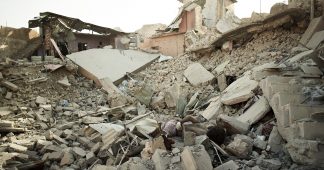 Iraq: US-Trained Forces Linked to Mosul War Crimes
Iraq: US-Trained Forces Linked to Mosul War Crimes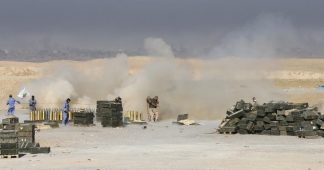 The Fall of Mosul May Not Be the End Of ISIS But the…
The Fall of Mosul May Not Be the End Of ISIS But the…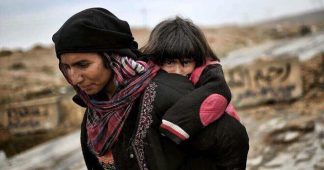 500.000 People Flee Mosul, ISIS Pushed to Syria
500.000 People Flee Mosul, ISIS Pushed to Syria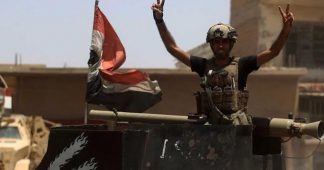 The suicidal divisions of the Muslim World: Iran hails the…
The suicidal divisions of the Muslim World: Iran hails the…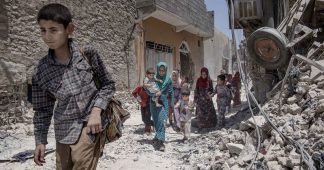 Islamic State Is Dying on the Battlefield—and Winning on…
Islamic State Is Dying on the Battlefield—and Winning on…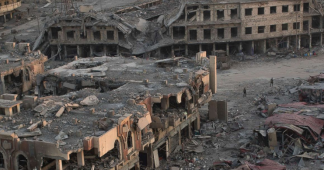 One week after Mosul’s “liberation,” horror of US…
One week after Mosul’s “liberation,” horror of US…





